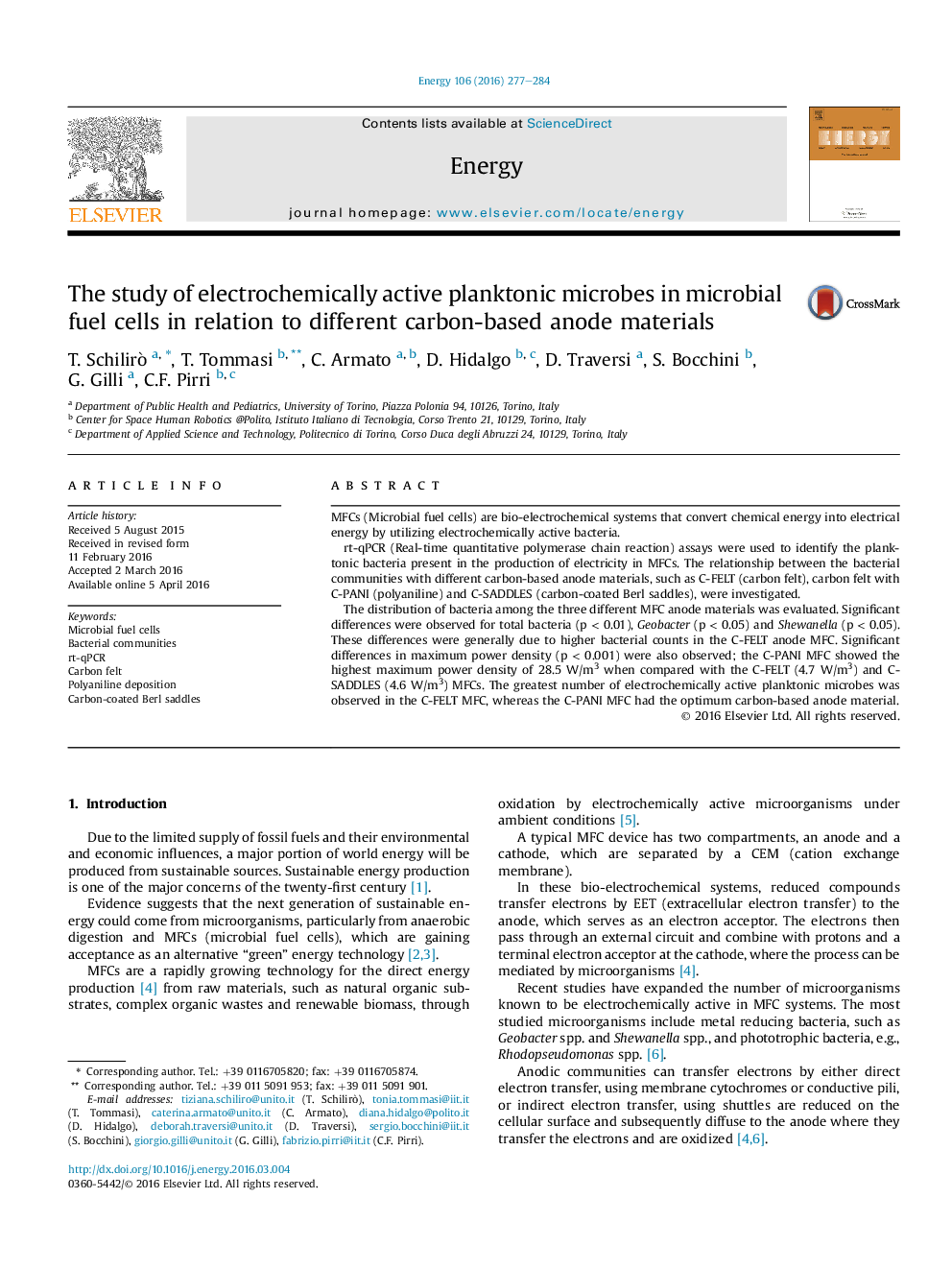| Article ID | Journal | Published Year | Pages | File Type |
|---|---|---|---|---|
| 1730959 | Energy | 2016 | 8 Pages |
•The best carbon-based anode materials results carbon felt with polyaniline.•Total bacteria are correlated with an improvement of the maximum current obtained.•The rt-qPCR revealed the presence of typical electrigens in MFC anode chamber.
MFCs (Microbial fuel cells) are bio-electrochemical systems that convert chemical energy into electrical energy by utilizing electrochemically active bacteria.rt-qPCR (Real-time quantitative polymerase chain reaction) assays were used to identify the planktonic bacteria present in the production of electricity in MFCs. The relationship between the bacterial communities with different carbon-based anode materials, such as C-FELT (carbon felt), carbon felt with C-PANI (polyaniline) and C-SADDLES (carbon-coated Berl saddles), were investigated.The distribution of bacteria among the three different MFC anode materials was evaluated. Significant differences were observed for total bacteria (p < 0.01), Geobacter (p < 0.05) and Shewanella (p < 0.05). These differences were generally due to higher bacterial counts in the C-FELT anode MFC. Significant differences in maximum power density (p < 0.001) were also observed; the C-PANI MFC showed the highest maximum power density of 28.5 W/m3 when compared with the C-FELT (4.7 W/m3) and C-SADDLES (4.6 W/m3) MFCs. The greatest number of electrochemically active planktonic microbes was observed in the C-FELT MFC, whereas the C-PANI MFC had the optimum carbon-based anode material.
Graphical abstractFigure optionsDownload full-size imageDownload as PowerPoint slide
